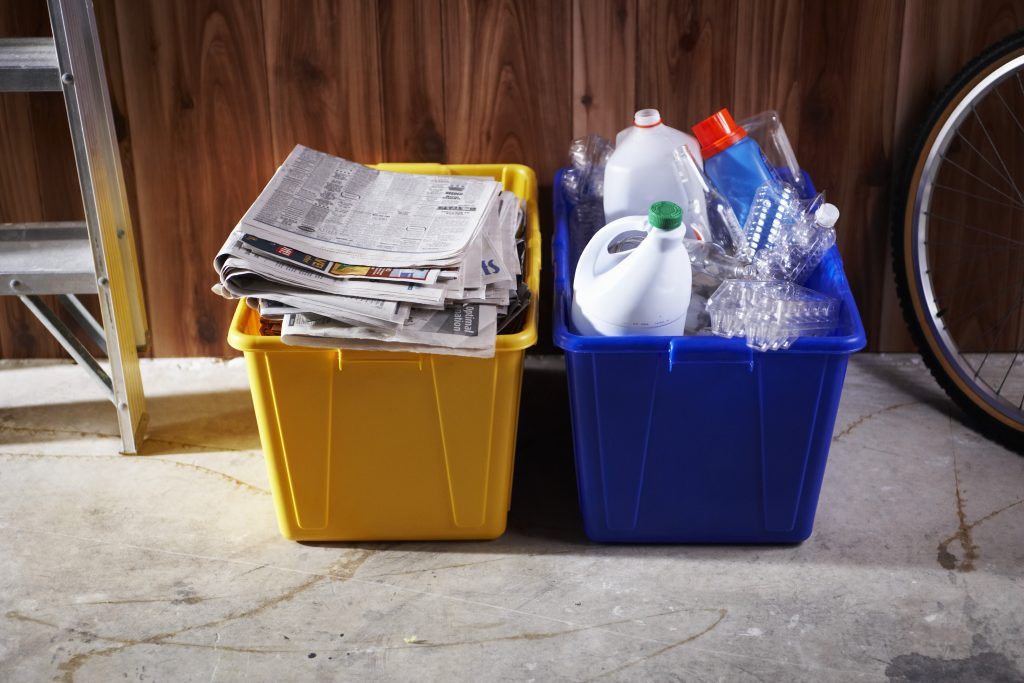
A study from The Recycling Partnership found that seven out of 10 cardboard boxes, three out of four milk jugs, four out of five steel cans, three out of four tons of mixed paper and seven out of 10 glass bottles, aluminum cans and PET bottles are put in trash bins in homes. | Volt Collection/Shutterstock
A study from The Recycling Partnership proposed ways to raise the recycling rate of residential recyclables – which the group puts at 21%.
In its report “State of Recycling: Present and Future of Residential Recycling in the U.S,” The Recycling Partnership (TRP) noted that recyclable material largely ends up in landfills due to lack of access to recycling services and a lack of education and communication.
“The report is based on multi-year field measurement studies conducted across the U.S. and The Partnership’s National Database; it uses an updated methodology for determining recycling rates that tracks materials throughout the system,” a press release noted.
The new methodology “tracks the fate of materials in the system, including material from single-family and multifamily homes, and includes film and flexible material,” the report stated, which is why the recycling rate is lower than what TRP used in previous reports.
TRP pointed to extended producer responsibility (EPR) policies and industry investment as solutions. Keefe Harrison, The Recycling Partnership’s CEO, said the data “provides an actionable roadmap for policymakers, companies, communities and the public to ensure that recycling reaches its full potential to reduce waste and protect natural resources.”
“Fixing recycling is completely doable – it just takes a clear plan and a true sense of urgency,” Harrison said in the press release. “This report outlines that plan.”
Data points
The report found that seven out of 10 cardboard boxes, three out of four milk jugs, four out of five steel cans, three out of four tons of mixed paper and seven out of 10 glass bottles, aluminum cans and PET bottles are put in trash bins in homes.
Overall, 76% of recyclables are lost at the household level, even though 73% of all U.S. households have recycling access. However, that access is mainly for single-family homes. About 85% of single-family homes have access, but only 37% of multi-family homes do. The report noted that the goal is for all households to have access.
Among those with access, 59% use the available recycling service. Those that use it put about 57% of recyclable materials in the recycling container, the report found.
“In an effective system at least 90% of households would participate,” the report stated. “This underscores the need for investment in communication, outreach and support.”
Five states – Alabama, Louisiana, Mississippi, Montanna and Nebraska – have residential recycling rates below 10%. Four states – California, Connecticut, New York and Oregon – have residential recycling rates at 30% or above, according to the report.
EPR is an overarching solution, the report noted, and should be a priority for policymakers at all levels. It calls on companies to design all packaging for recyclability, fund improvements in the system and support EPR.
In addition, the goal is for MRFs to process 95% of the recyclable material they receive, compared to 87% today, the report stated.
Cody Marshall, TRP’s chief system optimization officer, said in the press release that “each link of the recycling system is interconnected.”
“We need to close all the gaps,” Marshall said. “But we can make the greatest strides by investing in access to recycling services, and communication, and outreach so that people can recycle from their homes and fully participate.”

